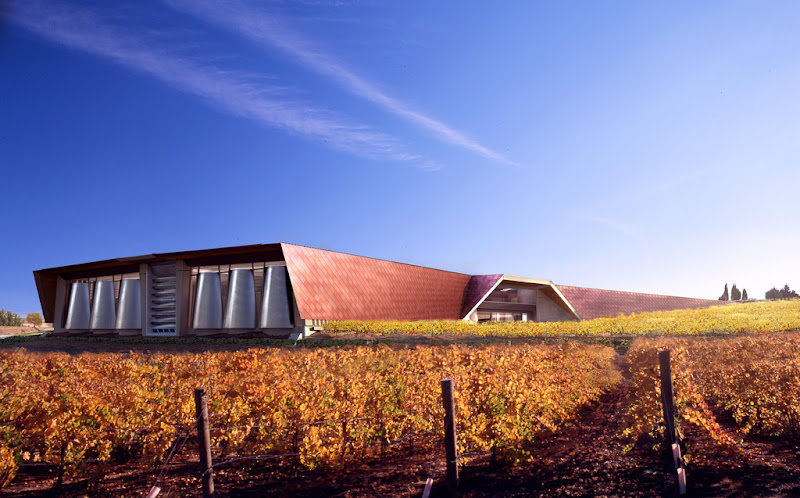In recent years we have seen has proliferated the link between the wine industry and contemporary architecture. A "marriage" that has more to do with marketing issues to functional or practical aspects. The most prestigious wineries have used architecture as a brand or image of differentiation in an industry where competition is fierce. This modernization process has been so evident in the Spanish wine sector, who has tried to take a leap of quality to boost its image and product abroad, by hiring the most prestigious architectural firms as Norman Foster, Santiago Calatrava, Zaha Hadid, etc..
You could say that this process has a precedent in the use of iconic buildings to lead the major changes in strategy of cities in its value in the international arena, as assumed the Guggenheim Museum Bilbao by Frank Gehry in Bilbao or closest example (bridging the gap), Auditorio de Santa Cruz de Tenerife Santiago Calatrava.
Thus have appeared numerous wineries author, from representative volumes in rural enclaves of outstanding natural beauty where vineyards thrive. Some buildings to be designed taking into account significant functional issues, not forget that they are an industrial infrastructure, and the environment in which they are located, rural normally linked to agricultural activity requiring considerable sensitivity but unfortunately often not well.
Bodegas Portia, Ribera del Duero, Burgos (Norman Foster)
Another aspect that has made large wineries opt for this type of architecture has been the rise of wine. It has taken the opportunity to build additional buildings to infrastructure that can accommodate original wine hotels, shops, restaurants, convention centers, showrooms, etc.. in order to contribute to the promotion and dissemination of the culture of wine as well as own brands.
Restaurant and hotel room Bodegas Marques de Riscal, Rioja (Gehry Framk)
The incorporation of this type of wine has not only been exploited by the Spanish wine industry, other regions of significant importance in the culture of wine as Bordeaux or California have used this claim or marketing strategy.
Dominus Estate, California (Duke & De Meuron)
However, this strategy involves a high cost, given the characteristics of the proposed buildings and the exorbitant fees of architects hired. In this time of crisis such facilities run, is an effort unfeasible for many brands, because these constructs are associated to the design world of luxury and exclusivity befitting a high-value public purchasing. Definitely an investment that only large companies can afford wine.








Heces a couple of weeks, our colleague and teacher Agustin Juarez gave a church concerts on this topic in Cofradía mismo del Vino La Orotava.
Deberias having assisted porque DID repaso a very full on the buildings that have Hecho en España en los años últimos. Contigo match in excepticismo. A Chapter segundo would be a complement to the latter may buen To analyze what is there in Tenerife are Made. We have already unas cuantas wineries with a touch of architects.
A shame haberme Lost esa church concerts.
Como hacer bien dices I have missed a reflexion on the buildings vinculados to use this existing Canarias and / or Tenerife, and the roads and suitability of these projects given the fragile landscape of rural land on the islands. A good topic for another post.